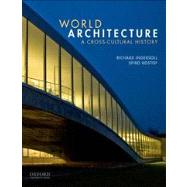- ISBN: 9780195139570 | 0195139577
- Cover: Paperback
- Copyright: 12/13/2012
Spiro Kostof pioneered a sweeping, unified narrative of architecture, based on its role in everyday life and society. Even nonusers looked up to his reputation -- including his narrative voice, his themes of setting and ritual, and his view of architecture as including human habitation along with great buildings. New lead author Richard Ingersoll makes Kostof's highly-respected prose much more accessible, the coverage more global and flexible, social and cultural themes more obvious in section openers and boxes, and the diagrams bolder and clearer. (Kostof's text, last revised in 1995, will remain in print.) Ingersoll had made the text not just much easier to read, but uniquely global, contemporary, thematic, and flexible: · Architecture is presented as a phenomenon that occurs simultaneously in many different cultural and geographical contexts, thus having many histories rather than a single narrative. · Buildings are considered as expressions of the diversity of cultures, situated within each culture's unique historical development · Chapters are strictly organized by chronology, using progressively shorter blocks of time, from thousand-year periods in antiquity to twenty-year intervals in the modern age. · Three sections in each chapter address distinct locations, cultures, or themes during a given time period, showing simultaneous developments in architecture in different contexts. For instance, chapter 5 (from 200 BCE to 300 CE) has sections on Imperial Rome, Han China, and early Mesoamerican civilization. · Flexible: Typical texts organize chapters around Western period styles - or present one building after another. Our 20 chapters with 60 self-contained sections for regions and period styles give instructors flexibility, without losing a strong narrative. Instructors may thus adopt the text to their course, incorporating whatever level of non-Western coverage that they desire. · New pedagogical tools include timelines and maps at the beginning of each chapter, and overviews of each chapter and section · Hundreds of graphics, drawings, and maps, and over a thousand color photographs · An open-access website with chapter summaries, review questions, downloadable image files by chapter, three-dimensional explorations of key buildings, and Google Earth maps







